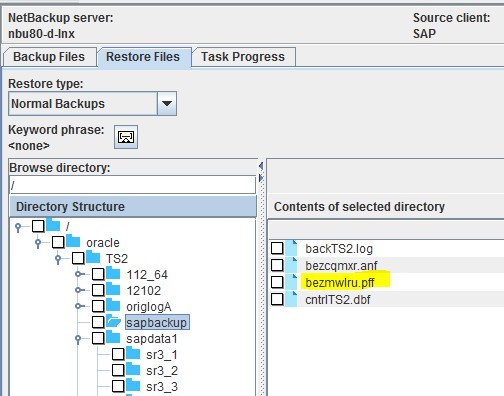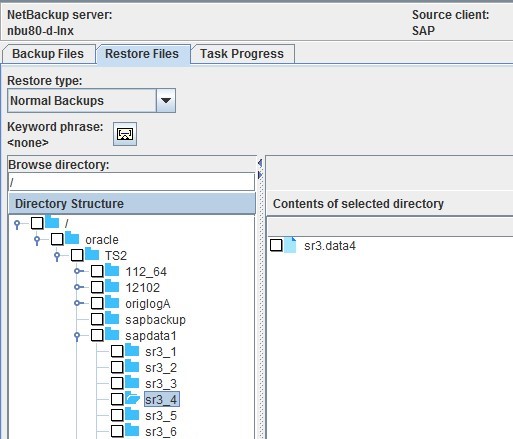Difference between revisions of "Recover SAP/R3"
(→Step 2) |
|||
| Line 14: | Line 14: | ||
Take for example Step 1, were we restore all data files and control file to a folder on a SAP Oracle client named '''bezmwlru'''. | Take for example Step 1, were we restore all data files and control file to a folder on a SAP Oracle client named '''bezmwlru'''. | ||
| + | |||
| + | [[File:SAP_R3_02.jpg]] | ||
Latest revision as of 11:41, 24 October 2018
Follow the steps below to recover SAP R/3 data.
Step 1
Restore the backup id file (the file with an extension of .anf or .pff) from NBU to the default SAP backup location.
i.e. /oracle/<SID>/sapbackup
Example: We have the file bezmwlru.pff from NBU which needs to be restored to the SAP Oracle TS2 instance. So we restore it to the required location of /oracle/TS2/sapbackup/bezmwlru.pff
Step 2
Restore the data and control files from NBU to the SAP Oracle client under a folder with the name of the Backup ID (create the folder under "/oracle/<SID>/sapbackup" directory. Make sure to name it without using the extension type from the Backup ID.
Take for example Step 1, were we restore all data files and control file to a folder on a SAP Oracle client named bezmwlru.

